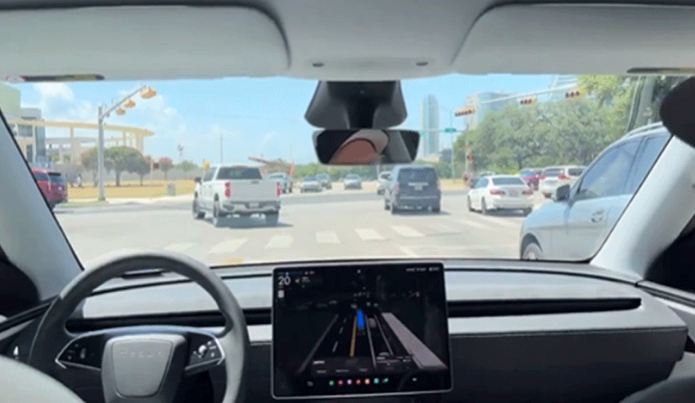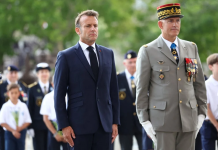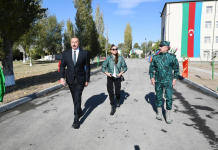Tesla has quietly launched its much-anticipated robotaxi service using driverless Model Y SUVs, marking a significant step in the electric carmaker’s efforts to deploy autonomous vehicles powered solely by cameras and artificial intelligence.
The launch comes after years of bold projections by CEO Elon Musk, who has repeatedly promised the imminent arrival of fully autonomous Tesla vehicles. The company is now offering early access to a limited number of vetted users through a new app-based hailing service operating from 6:00 a.m. to midnight daily, though the rides remain subject to weather-related interruptions.
A flat fare of $4.20 per ride—seen by some as a nod to Musk’s past online antics—has been set for the pilot service. Initial reports suggest that around ten 2025 Model Y vehicles are operating in a closely defined area, each monitored by a Tesla employee seated in the front passenger seat. Tesla has described these individuals as “safety monitors,” though their exact responsibilities and level of intervention remain unclear.
https://platform.twitter.com/embed/Tweet.html?creatorScreenName=SAMAATV&dnt=false&embedId=twitter-widget-0&features=e30%3D&frame=false&hideCard=false&hideThread=false&id=1936954943040041320&lang=en&origin=https%3A%2F%2Fwww.samaa.tv%2F2087335372-tesla-s-driverless-robotaxi-is-finally-launched-check-here&sessionId=dc47f4eddcb2450cb7f6869a2ca24654e7911ba6&siteScreenName=SAMAATV&theme=light&widgetsVersion=2615f7e52b7e0%3A1702314776716&width=550px
Videos posted on social media showed the vehicles in operation, while observers on the ground confirmed sightings of the branded robotaxis departing from what appears to be a company depot. One eyewitness, auto industry author Ed Niedermeyer, documented a Tesla robotaxi braking abruptly near police vehicles, raising questions about the vehicle’s responsiveness and real-world driving judgment.
Despite the public display, the company has so far shared limited information through official channels. A dedicated page on Tesla’s website offers basic guidance on using the app, recovering lost items, and rider rules—but omits key details regarding the technology’s safety protocols, system limitations, or the performance metrics typically disclosed by competitors like Waymo.
Notably, Tesla has attempted to block public access to records related to the robotaxi program. In separate cases involving TechCrunch and Reuters, the automaker sought to prevent the release of relevant documents by Texas transportation authorities, citing the need to protect trade secrets and business-sensitive information.
Tesla’s robotaxi launch strategy diverges significantly from that of other autonomous vehicle developers, who typically began with extensive testing phases under human supervision before launching limited public services. In Tesla’s case, the company has transitioned directly to commercial operations, albeit with human monitors still present in every vehicle.
While previous demonstrations featured Tesla’s signature Cybercab vehicle unveiled last October, the current fleet relies on retrofitted Model Ys equipped with a new version of Tesla’s Full Self-Driving (FSD) software—described by Musk as “unsupervised AI.” The company states that the in-cabin camera will remain off during rides unless support is needed or in emergencies. After each ride, the system will assess the vehicle’s readiness for its next trip using the camera.
Riders are allowed to record their experiences, though Tesla warns that those who violate its usage rules—including by sharing content showing misuse—risk suspension from the service. Prohibited behaviour includes smoking, vaping, consuming alcohol, using illicit substances, or committing any criminal act while on board.
Musk and top executives celebrated the launch over the weekend, with the company’s self-driving lead, Ashok Elluswamy, posting images from a private event. Musk called the launch the “culmination of a decade of hard work” by Tesla’s AI and hardware teams.
Still, the debut raised questions over transparency and public safety. One early user reported that remote Tesla staff had to intervene during a ride, although the overall experience was later described as smooth.
















